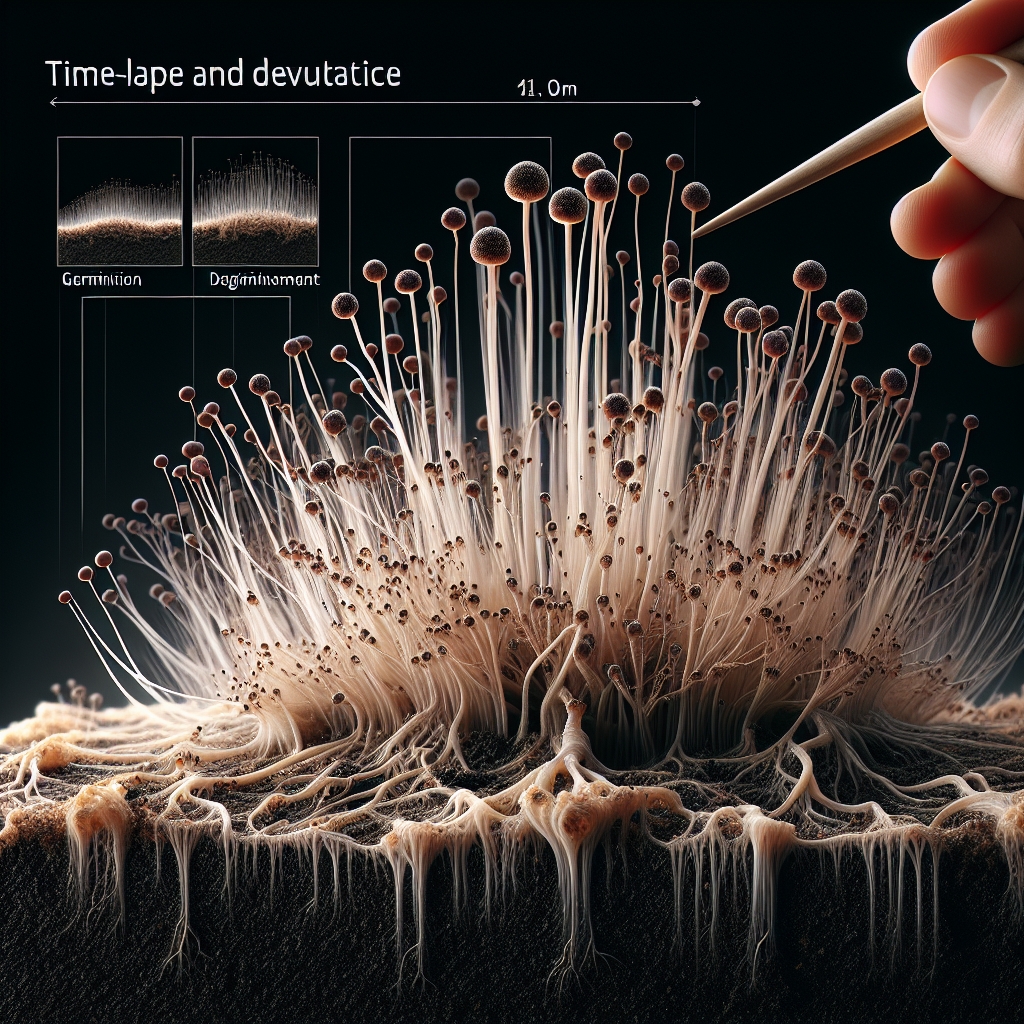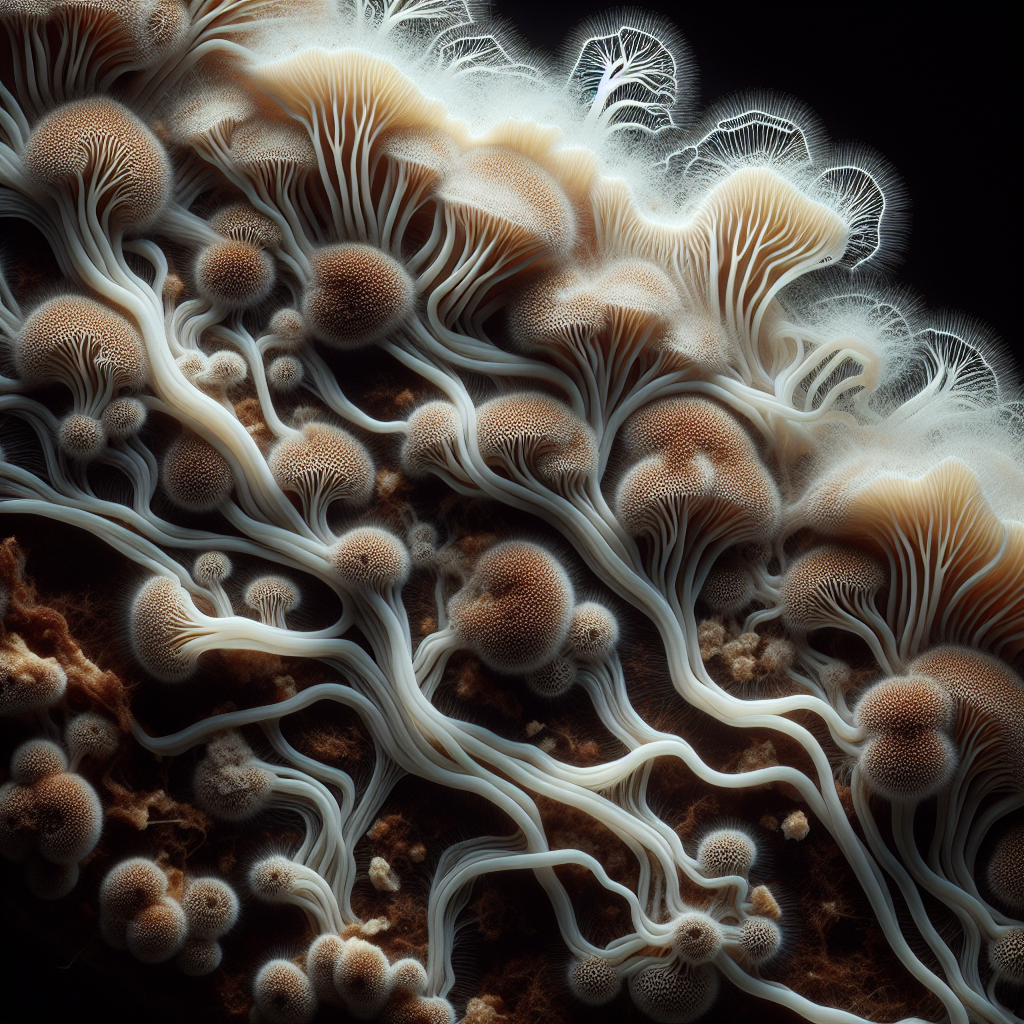An exploration of the stages of mycelium growth offers an inspiring journey into the fascinating world of fungal life cycle. This article dissects each phase diligently, providing a comprehensive understanding of the dynamics acting behind mycelium development. As you read on, you will be enlightened about the complexities of mycelium propagation from the initial phase of hyphal growth to the eventual formation of a mycelial network. It promises to be an enriching experience as it enhances your knowledge and creates intriguing insights into the unseen world of mycelium growth.

Understanding Mycelium
Definition of Mycelium
Mycelium refers to the vegetative part of the fungal organism, often subterranean, that comprises a tangled network of filamentous cells known as hyphae. This complex structure, mostly unseen below ground, serves as the fungal colony’s primary means for nutrient absorption and distribution. It is the mycelium that is primarily responsible for decomposition and nutrient recycling within ecosystems.
Role in the Ecosystem
Mycelium plays a critical role in our ecosystem, acting as nature’s decomposition agents. By decomposing dead organic material, they recycle essential nutrients back into the ecosystem. They also foster the survival and growth of plants by establishing symbiotic relationships where the mycelium provides nutrients in exchange for photosynthetic products from plants.
Different Types of Mycelium
There are several types of mycelium based on structure and function including, rhizomorphic, tomentose and cottony mycelium. Each type serves a unique purpose, from facilitating colonization of new territories to aiding in the absorption and transport of nutrients.
Mycelium Structure
Components of Mycelium
The mycelium includes elements such as hyphae, mycelial cords and rhizomorphs, all connected in a complex network. The hyphae, often microscopic, grow end-to-end to form lengthy filaments. These in turn often bundle together to form mycelial cords and rhizomorphs, which offer enhanced functions such as conducting nutrients over greater distances.
Understanding Hyphae and Hyphal Nets
Hyphae are the basic building blocks of the mycelium, growing outwards from a fungus spore in multiple directions to source nutrients. Directed by growth tips, they invade organic substrates, releasing enzymes that break down complex compounds into simple elements the fungus can absorb. The hyphal networks, or nets, are formed from these interweaving hyphae, creating a dense web that pervades the substrate.
Stage One: Spore Germination
Defining Spore Germination
Spore germination marks the beginning of the mycelium lifecycle. This process involves the formation of a tube-like germination cell from the spore, which evolves to become a hyphae as it seeks out nutrients.
Factors Influencing Germination
Germination is influenced by various factors including, temperature, moisture, and substrate composition. Optimal conditions enable the spore to break its dormancy and initiate germination swiftly.
Timing of the Germination Stage
The timing for germination varies significantly depending on fungal species and environmental conditions. Under ideal conditions, spore germination can occur within 24 hours but could take longer under less favourable circumstances.
Stage Two: Hyphae Growth
Definition of Hyphae
As mentioned earlier, hyphae make up the basic structure of the mycelium. These are tubular, filamentous cells extending from the germination spore.
Process of Hyphae Growth
The growth of hyphae initiates from the germination spore. It secretes enzymes to breakdown complex organic substances in the substrate for nutrient acquisition. As the hypha receives more nutrients, it extends further into the substrate.
Role of Hyphae in Mycelium Development
Hyphae are a fundamental part of mycelium development. They not only facilitate growth through nutrient acquisition but also provide pathways for nutrient transport, allowing the mycelium network to expand.

Stage Three: Mycelium Expansion
What Happens during the Expansion Stage
During the expansion stage, the hyphal network extensively grows in size, colonizing the substrate. Interconnections are made, creating a dense, white complex of hyphae known collectively as the mycelium.
Factors Contributing to Successful Expansion
Successful expansion of mycelium depends on suitable temperature, high humidity, and nutrient-rich substrate. Any unfavourable condition can impede the mycelium expansion.
Effects of Environmental Conditions on Mycelium Expansion
Environmental conditions greatly influence mycelium expansion. As mentioned earlier, while temperature, humidity, and substrate are key, other factors such as pH and light may also impact this growth stage.
Stage Four: Primordia Formation
Explanation of Primordia Formation
Primordia formation is the initial stage of fruiting body development. These tiny outgrowths, formed on the mycelium, are the preliminary stages of a mushroom.
Role of Primordia in Mushroom Development
Primordia serve as a foundation for mushroom development. It offers the initial structure from which future growth, expansion, differentiation, and maturation occur leading to fully formed mushrooms.
Factors Influencing Successful Primordia Formation
Several factors influence successful primordia formation such as temperature, humidity, light, and carbon dioxide levels. An optimal balance of these factors ensures timely and healthy primordia development.
Stage Five: Mushroom Formation
Process of Mushroom Formation from Mycelium
The process of mushroom formation begins with primordia development. Gradually, these structures start to expand and differentiate into different parts of the mushroom, including the cap, gills, and stem.
Role of the Mushroom in the Lifecycle of the Fungus
The mushroom plays a pivotal role in the lifecycle of the fungus. It acts as a reproductive structure, housing and releasing millions of spores, which can initiate new fungal colonies.
Variations in Mushroom Formation among Different Types of Fungi
Mushroom formation varies among different types of fungi, characterised by differences in size, colour, shape, and habitat preferences. While such variations are genetically driven, environmental conditions also greatly influence these traits.
Conditions Influencing Mycelium Growth
Impact of Temperature
Temperature has a significant impact on mycelium growth. While the optimal range varies among fungal species, deviation from this range can either slow growth or entirely inhibiting it.
Effect of Humidity
Humidity is crucial for the mycelium’s health and functionality. Insufficient moisture can result in spore dessication and failure to germinate, while excessive moisture can lead to mould growth and competition for resources.
Role of Light in Mycelium Growth
The role of light in mycelium growth varies among species. While some require light for primordial formation and growth, others can grow in complete darkness. For many, indirect or diffused light is sufficient.
Influence of Substrate Type
The type of substrate directly affects mycelium growth as different species prefer different types of organic matter. The substrate provides the necessary nutrients for growth, making its composition a key factor for successful colonisation.
Potential Problems and Solutions in Mycelium Growth
Common Issues in Mycelium Growth
Mycelium growth can be hampered by several issues such as contamination, incorrect environmental conditions, and inadequate nutrient availability. Common contaminants include bacteria and moulds, which can outcompete the mycelium for nutrients.
Preventing and Resolving Growth Problems
Resolving mycelium growth issues start with good hygiene practices to prevent contamination. Temperature, humidity, and light conditions should be appropriately maintained, and the substrate should be properly prepared for nutrient availability.
Professional Help and Resources for Mycelium Growth Issues
In case of severe or persistent issues, professional help should be sought. Various resources provide guidance for mycelium growth, including books, online forums, and expert consultancy services.
Future of Mycelium Research
Potential Technology Applications
The prospects for mycelium technology are wide-ranging, from biofabrication of materials for construction and packaging to pharmaceutical and culinary applications. The adaptability and efficiency of mycelium hold great potential for future innovations.
Role in Sustainability and Environmental Restoration
In terms of sustainability, mycelium offers a promising solution with its capacity to produce biodegradable materials. Furthermore, by decomposing organic waste, mycelium contributes significantly to environmental restoration and soil fertility.
Current Gaps in Mycelium Research
Despite its potential, some gaps exist in mycelium research. These include the need for better understanding of its growth patterns, functional capabilities, behaviour under varying conditions, and genetic manipulation for performance improvement.
Emerging Trends in Mycelium Research
Emerging trends in mycelium research focus on its potential as a renewable material source, its role in waste management, and its use for soil rejuvenation and reforestation efforts. The exploration of novel applications for mycelium will continue to broaden the horizon of this amazing network of nature.
